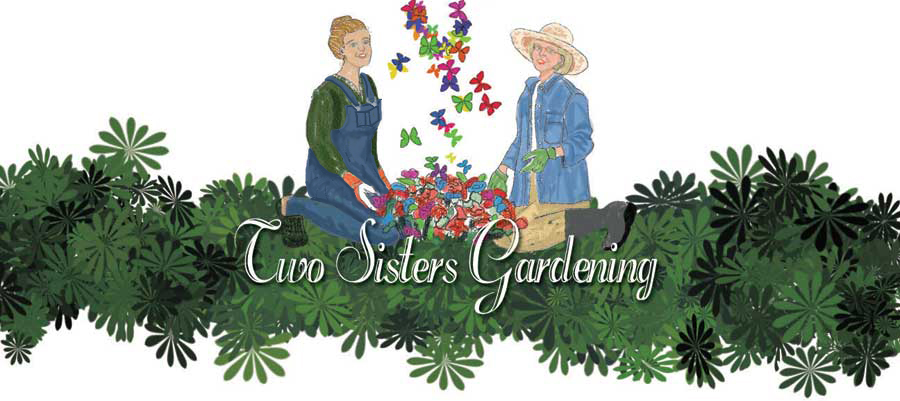If you remember the old saying "April showers bring May flowers," I guess this year I'm late because here it is the month of June and plants in my yard and garden are just beginning to bloom. The truth is these plants are summer bloomers and I need to add spring bulbs and perennials to spaces, if I want more color and blooms in March, April and May.
Especially in June day lilies that only bloom once a year burst out for several weeks. The first three photos are planted in the back of my house. I bought this pink beauty several years ago from a local day lily farm. I have four or five other pink varieties near by but the are not ready to bloom this week.
In the same area are an older orange-red variety (probably 25 years old). Day lilies are native to Asia and before 1930 ranged in colors yellow, orange and red. Around the 30's, the U. S. and England began a hybridization fervor and today you can buy them in rainbow colors, double flowers and day lily plants that bloom once or more in a summer season (spring to fall) depending on the variety. There are many pluses to this beautiful flower. Generally, easy to grow, takes little maintenance (unless you plan to sell them), resistant to disease and pests, adaptable to most soil and drought resistant when necessary. And the best part they are perennial!
Also in the backyard I have a butterfly shrub. As you see above mine is white, but they also come in blue, pink, red, violet and yellow. Of course this shrub attracts butterflies and other beneficial insects through it's flower nectar. It can grow 5 to 10 feet tall and does need trimming in the fall or early spring for best blooms. The butterfly bush will bloom summer to fall. Besides trimming dead branches and old blooms prior to summer, add mulch in fall. It is also a native of Asia and the formal name is a giveaway, "Buddleja."
Moving to our vegetable garden, I have several varieties of wildflowers. The definition of a wildflower is a flowering plant that was not intentionally planted. Most are annual and depend on the seeds from old blooms to come back up the next summer season. Above you see a "Mexican Hat." Mine return every year in the same area because in fall or sometimes before, I cut them down with a mower.
Don't confuse native wildflowers with mixes you buy at your local garden store because many seeds in the mix may not return after several years. Often many seeds in a bought mix include seeds not suited for our area. Walter Reeves on Walter Reeves.com recommends buying wildflower mixes specifically made to plant in the south. He also recommends to re-sow your spot every fall for maximum show the next year. Some good for our area are Cosmos, Cornflower, Shirley Poppy, butterfly weed and Coreopsis.
I have my biggest day lily bed at the front of the garden. For several years I have tried to add new colors or different lily varieties. I love this burgundy/purple bloom.
I added this Easter Lily last year and the photo doesn't really do it's beauty justice. Usually, they bloom April through June.
The Easter Lily originated from the Ryukyu Islands, Japan. It has long been a large money maker in the U. S. Market at Easter for gifts and cemetery flowers. I gave the original to my mom last year and she was going to throw it out after it quit blooming.
The name originated from early Christianity based on the resurrection of Christ, as it is said the flowers sprang up in the garden he visited the night before his crucifiction, as well as, it was noted he recognized the flowers expressed in Luke 12:27.
Another wildflower that continues to return every year close to the garden is Black-eyed Susan. I love the way this plant always comes up in a bunch. It is a great flower for our area to extend the blooming period of other wildflowers. Other perennials like daffodil, day lily ad Queen Anne's Lace do the same thing if planted in close proximity. Once my Susan blooms die, I either pick the old blooms to store for next year, or mow them down.
Seen above is the Trumpet Vine. It is native to both woodland China and Southeastern United States. It is a climber that attracts birds, especially the humming bird. This vine has grown midway of my driveway without any help from me. I have never done anything to encourage it's growth or blooms except enjoy!
Another bloom in my drive is seen above. I suspect it's a member of the sunflower family but haven't researched to find out it's name or any other information. I only know it's a native of our area. If you have a guess or idea, please let me know. I do know it's not a Jerusalem Artichoke and there are lots blooming or about to bloom.
I like the leaves as much as the bloom.
Here's a close-up of one of my Black-Eyed Susan blooms. Can you guess the bug on the petals?
As far as I know, it is not a pest, but a delight to children (and grown-ups). As a kid, I would catch them (as many as possible) in a mason jar and put them on my bedroom window sill at night.
So, you've seen are what's blooming in my yard and garden this June. Hoping your enjoying the blooms at your house!
Until Next Time........
Happy Gardening 2014!
Posted by Wilma Smith



















































